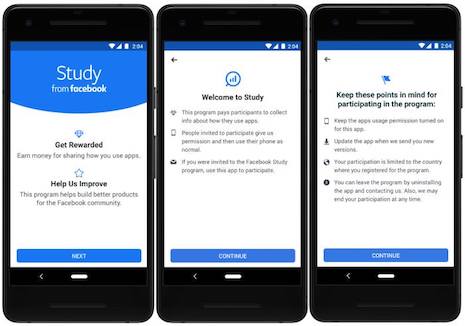As brands continue to invest in consumer research, it is imperative that businesses put insights into action to better reach customers.
In a webinar hosted by Brandwatch, an analyst from Forrester revealed that less than half of companies make business decisions based on quantitive data. With consumer habits becoming more complex, it is also vital that research is thorough and accurate.
“Customers want what they want where and when they want it, and they don’t get those ideas primarily from you,” said Cinny Little, principal analyst at Forrester. “This is one of our challenges today as brands and consumers continue to change.
“There’s explosive growth in technology’s role with customer or consumer understanding,” she said. “But firms still struggle to actually do something with their data.”
Diving into data
Almost three-quarters of brands are building cross-functional teams that can collaborate and work with agility across the silos in their companies, according to Ms. Little.
Data plays an important role across departments and can help guide decision-making. However, not all companies actively use their customer research.

Facebook has launched a rewards-based market research program. Image credit: Facebook
Only 48 percent of brands’ decisions are based on the quantitive information data provides, up from 45 percent in 2018.
Research from Forrester shows that public companies that have insights-driven strategies grow at an annual rate of 27 percent, while the global GDP will grow at 3.9 percent annually through 2021.
Additionally, customer data and feedback can guide companies as they navigate today’s more paradoxical consumers.
“Consumers are becoming a little more complicated,” Ms. Little said.
For instance, consumers desire rare goods that are also easily accessible, or they are drawn to brands that reinvent themselves but stay consistent. This is especially true among younger affluents, who see luxury as more inclusive and expressive than their predecessors.
Brands are responding with new products and services that cater to consumers' concerns, explained Will McInnes, CMO at Brandwatch.

Prada Re-Nylon bags are made with upcycled nylon. Image credit: Prada
Growing interest in sustainability among younger consumers has led luxury labels to innovate.
Italian fashion label Prada is taking an inventive approach to upcycling by introducing a handbag line made out of regenerated materials. Econyl is used to make the totes, belt bags, shoulder bags and backpacks in Prada’s new Re-Nylon line (see story).
Consumer feedback
Similarly to consumers becoming more responsive to brand narratives, businesses are turning to storytelling to better understand data before acting on it.
“Data storytelling enables you to align with business stakeholders, which leads to actions,” Ms. Little said.
Research quality is also crucial, since some consumers may be dealing with feedback fatigue or misunderstand questions. This makes customer data more difficult to trust.
Speaking at Luxury FirstLook 2019, the CEO of Customer Experience Group encouraged marketers to rethink how they gather consumer data and from whom.
As consumers are constantly asked to provide feedback for their experiences with stores, services and more, it can become frustrating – particularly if customers do not perceive their comments and concerns as having an impact on companies. Looking beyond customers who purchased items and also getting feedback from those who did not complete transactions is also important (see story).
According to Mr. McInnes, the best way to get digital consumer intelligence in the future will be through mobile surveys and social listening, especially as consumers become more protective of their data.
Consumers are also getting more power to prevent access to their information.
Technology giant Apple is continuing its pro-privacy crusade, but its latest features may alienate many developers and advertisers.
With Apple’s forthcoming iOS 13, it will be easier than ever for consumers to protect their personal information and prevent third parties from exploiting user data. However, advertisers have come to rely on this data to learn more about consumers (see story).
“Our communication channels have changed drastically,” Brandwatch’s Mr. McInnes said. “There has been exponential growth in connectivity.”
{"ct":"M2Pgi25B+DOJpU+89fvPo1swBsi1jzbPBnSFRiVUZbaav1rk2fbYnDOvEvdHB6g\/rPddT68spJqYFepkWEz+j6nbxJEDGPdUZx+S+x5yrlNwGCmHD1Vy4c7Q1cfK4Gnuege0xASYDN51I8stmiZ+MXBu0VieRmD9MIlRx9zh5C15pRnHcUdDWaLFbO1dqX9b7GX7tmFfyQ\/lG0wiL9rUGWEnt93DkCq67JR+Gila+m\/zbxVs27FOnogYSyw24zHdZSt0CE1u1DwV+ExoRLAbMQyTdFWTaN\/4EjjWryA3k0PlY1Ydb0LLtRyGTQqvcbZi+AAxXie9VUJbgf1ce4mCsMLUB8ko1biAGnAii9zBwLPATKEsKSIvhMGAjixJSzK\/qYcRhYi7Vzs6cqrZmRMvhgKsKTU6fw8IvTsGXZBQ3EvpWdmXsIm2zAN0VgRTfQFV7R2zbCl7TGcr41y7G77aLfYnxDmFLqLxl10M+dtcCxihhr7d9LYiGj5Qm6uW8RbQekow0EGA0rgDI6951L+bTm9AenMxQ2xp2VCbRL24ZoCItUAPMU2zpvprXACfQDllOZHs6BX6V2gomYRsu4qoJv8UWBG4b26M5HbXyilsQmXgcwFEc1PKv6OL3yxjhbrKguGdn\/3bnlxfDAZG\/zDM5J\/uNg7Er+rt5s4vZfQktJ1sFijizi9HFF22cCxBglcl2OMF\/Y+sWJ\/E4RQdEL8jfqFK8eRMBOF9uMmD\/vYPqmeDXu4mg\/34YOu3l1vIjuQCuGR2xRGj0HHjtEZOFeQkyh1Ntr6DkFjlIFN+1lBl+jnbwNifNnmSeOCIU17ey6UTMVFZ1PgbdozmNodUGyHEtttF0H3mB3tU+RDuqbgZiY3gaN\/yAUBujOkrq7h+mBjtKwiM6JV7QDNPxTPQXuzrqQAEfi+G5ymkOhmokg6Awb5B8+YjAU1N7OTVqqtyUW3U1cd8WRA7LdVRjMh3zSAYsDJpFa4dzhyBDznI5EugNz\/q13aBUGZop7DL3Wb2m5XeJPwc\/d7OB0oITTq93H\/N2bBr7hjkHTOH+zmMeW31gmyE9HoMxvISNkRXj7NW4jz6onZUEAuHNgKVZaMSHSBdQEaKWCOOBspv4zVALAVd1MxNu\/\/lKqsNZLyNdgNRaeNYus9d0t98FeowOfYA4k0yiu7LNaE4hi5X9dB550iyIJSRAhlDlahDELx+xDFbQNq5DSzRtFJkWxaMqPAemTFzAJ1aUDMtmM0kSmi2fzNJ2qEjfCRNiek\/hbaOR7Imxy4zmhxhfK596om3swvmKkkXplUbirMxmoGthoXtUByqnh4Ew73PtCg0Bq2s\/JEYXpEHuH3R3BObVqMI7PZw+BWvElqT7Qbd0xZRVFDU9YCQkaZj7Vq4pNpXZiSxPU4zo+IGsUbGcQkWhFUOsgdw688kNbfoWGiH0K82H94pe7t114G08qpe\/KGXfkfHMyh4dZNTvs0ScuvtyJWv51Jh\/GE0JFFhma7zEarURaUl7BxXhX0sJUuNntOnRat21cjPCoP5\/cc8udk8bupK50E6xn006eIArekvTogkH8Pyi3nOG8SBeRcYlT04EuP1J0JIYoXXbCMEQu\/7KJxZvkSSjur2GX6MfrU\/MMbHfpcLmwD4P3rPO01rEvMRl\/V6FHSQj8rNmGGcRwN8quHhic6m9qEbheVLKvknRWSL9Rr1Oic2920BFMT7Bev0a0jkGxN+zZLnugA22wiKoc\/oNHFWtoc4cAgqybPJnklZr5R0qEzMA8M1Oxbz09MKsECI6Rx\/FuW6Eyfwwc2ZVWacCuK7xG4WStvT7O++xhD2CEThxI6bIS5tSvYKm4mv5CUiSfaUq9JojSt+3XLehy7JrjpKxuf7Or9Pc1ta0QrAMaWSPqrBblUMw6ZahGHy4D6maRxLS6t6gfJi6eJ9LLGZfR9pEmFNwoM78nOb9uWrXyew7sabXONt+EfEto0rx+Dn\/qAZsrwSvL5XI7fwUCl2zv4khWdrYKn0WduCDTJIyzZ7c8AHI8cqoiKHvQFX4LTR0r\/Di6AZWgd6+woddEs7ExOVkSvhfykNXyVUT7okMqQc1QppHWR8RKmrPJ6qdG2N6tA2OJxUx+OtiMcMidJHmUYkOCJW++7A4\/ktBsJO01OmPmsMv90qnGwJr7Z4I6QIgIV8P9GCByhmc0dkN29SZ3C7o+SphKwmnnueFHlP\/ZBYv3x2gck0BXfUJKZBX67PXyFs0ye6nKMGVM9u67FvhW4eJ+VpQ3BgVEqK4zN\/SuRwY9fYQXNZ1KXR0EyKct3YBGOka6L6iVDWD3yUXadpWn76tUvoDecyJYrdVGOwzt2SWZh3KHF\/EU14q67uE4lSjAuoKykfHup+rCqvs4XZsXp6fzcU4eEzgv6nKdxR1mWnmcmNNp+e0olkCu2Eu1wTv7ng\/Tn3oT6suY6b\/SRc2YGQMRlrjsPKNkC6i9zyO+3jlbjVh8FBze7onbE0gLE6JDBKetkvLtNUFgOkL86rPFIa6rgprNv4IZzgHGOht6vyoX\/xggwUGif7g0dIfKg6ZZy1hZzKlTC1Eff\/eQLcqv2maPSSI07oTXvOPZnH1+B925ALDqmNsnJ6qBDOX8C4fb3KUzl54rc\/DYZ5JGg0FX5Mu+aM5a86qR3dMGQSKVl37wNJY4s3mAThvH8M6Qh\/17T57YEYAghXxlFMmQ1ZGiQzsz8ftmXP7FfwxU1RwLvR84\/Vp6iNk2ZEZ33Jkr5\/VBy4VvEQUdAt9IUAfqUsLcxO9cxJ7ofM1Ca5eoUMsslk5FBfXPLWGjAibnfIXMUsflHT2kbGh3efyr7mqQ+kXP50+rYatvwlk4Qp3pC3yj87dEZCmev8kQGBbY5eG2AMUvGdpBvWbHiVIoh2zSceynPXXRlaMWM5L91pqOc+1p0NtwVV3xT1Ze9QTZUxS5BBcOVoMTECEIntmjnlXqzeY3hjhtCEwkQxAQpEPKq7NQdOKzrNmyji3ejmvky8PTjgf4XSlJcJ1+onvyX26hblsBFNmzrkxka4D\/r7Bzo9ZUpFN7Rs7TsgMBPMNwQiLrM89XfNAD1bNsIDk+PcNuOzwJ7pkX5qycZCwJoSZ+1CvgsxNbVWGEy2eOu65xgKrE99g3pGs7RfEV81i35msT0AZRmR4n+oJ6zJ4OnKY7o+7NAm6DFhOAFSbNJj4ImctdrsAKYdgbTs3CX2Q5PFXqf+CNve+9hegNB1GZE2xS1wSwJAZzHl9PydQ5D2vy\/+lYHIErXWEFhOqe1oKPb5hPrYG8CTsytZcJer47IXcU5sPzk+WPMB9lJgjDR9Ut4e+tHEo\/qMHcqvY15QPHrGnLFdZX8b8zoggmC+vF2cbHnOmdklg2aCxj0Dciat0YF8N8sX\/GhTVbCha9jKLI3mxqX7204X71yc3krsI\/bfYtSu0YpaX+ryT7xOfPJyQQ9yUp9hoUf+IVvHGColUx4DV4O9EnOrkpVTcKDcr7XlI58PvKQucB6pucsH8ahSTUCwZ0NvTcLus4QL34G3tEuDWrDMoerJ9ZGdP8nizORfrF0+eytnrl+\/Ed3epNn\/eSiJl62+PDscUNrhEK0cdQ7Izs3xGuORjI0UaJkUlfzeWQXSy8nCnC53t7D6o\/0685DUHUUzFTrPxOUy2w3Y0pEpdHJ7rlVZcsHdzklTNqlkJmm1J88vDHfJHu+\/Zn20wM8PzJoXhlHayMhNz8ijYVSLMWAhgjkCimZeVFrM+WTfliHkxv8lG2C1gO1BUWUBhbsUn\/YMBbNclPkOC1AXgzn3zK8BizMlpo050FjB+jMounNNssK67C4SywrlSH3i4phRZDAA2926zz9VSZ9iPuW2EQBlF1BPiBURFwfmK6UASHgXzEEViJSFoeU8P6CYdDOf\/DAquYT1C3Y\/r4Oe5Zj3yTRp1SWrVBa1deHf2K24nhhAX4nQWmel\/Y7VEKGXSZhPF3pRn9luAHFyV5S9ihcL+m+cRxP6VkdT78ncyI6YD70PWCdls9C3DEoVMT2jOdirayaSW8BAtCL08sGp9NEz8ygKuxwduGiStYITrcGgeQJHeyaWXQIWxDgBiuWJgOSxoyLVlqIhOK55q5T1BboqUajl+3dseFeOB88l\/ZxaGSVn4aiSBCF\/foVS5pUwMSHVAF4f1ONZ4mPOI4tMES0aUxe5boAlJ2lDYlyddwQDi8rGXiVR+RAuhFqQMsiLeA3qga\/FzYCyshoaW6XsH0s2k3SqV0StGyniXzG+eXLj0z+t3H\/HKQSEneb5PTf4t\/jWTs1t7I9EUP0KmBHGkEoKxtlTnmrPNNwXW95Wei420GiuMKS2jW5\/\/gP4Bv6j8RJrJxJR8oNEJl9BeRY0JMEu8i6jsoHr+\/g8rkdC5Nz++es5CtV2qc7MDNi5k7vHL2i7JJIAFZ7\/QE11y69Tyyufu9++ILFo8atsedxXJAFO+xx7odMRyWJgpIU5xebBM+zomk0eJRJk1ZwDJYy1+j85HvTxZ3w+9z\/\/GrvAo3VObAQk3tHTQOg1a91H0o5GcMk3rclF7oibRul7xcDLYw2fsSke1x9m6ssjMgCvZrdoEsmz9c9lG2XjYhBxepprPMYou\/goE7owv\/lFYSnb2eVf6xLgAoBS8o6fzBc0MHjBHl9qP0BsA7XwSPApA4rOgNTXuLspPH6paLMkc64jta2v4oSqO5zoA7\/7LT5NivVJnRn\/cbljy2F3nbti5v3oTo1hHTy0IVnrCrBksdJGKwnstg2RS6X8zPuC\/miVd9of+GOMy\/AaGMnGXPS1nFaV8RYbNoENdWxdJFPgLABG5R+tfXVWPgOG2Vg8xF41cHdBrhDTibt20A13Wjw8BuQvOutBUkbB08aJFJNMicQZ\/7a+8MDOGs1r1B2MHu9W\/sAnU6F4pet3ne+a5Yo8MwA4F+ekfYYrgOhsU65vECVL38zwZl4zlsyLbxRZxckrnh+7EcFxiGzUxcUr\/OS9\/42pEZm9\/LHf6Z3NB9fSCaeGjf1dVCu2VByI5VrZT9eFOJn1pvU9bw8zDvBDR\/UlqrCitJESDKZohjW620D1WgdhCVQvE7PMcTe2kbSowqsIc1y6fuMHahTYD1T8kTlDOM7vj+e1NTPVK2J+y2c\/7\/LfkZ3XR2mqc2gw60cBPZSsHy5eMQ2MP4c6I6aUGfAvLIsVEPX7wDZstd2Wxnf9lj0AR7y3137L2N6RfL8zdS9z3wbzPoV0Iy0HdCtoGF7+1i6sgFs3w3G4kYNj26+LressP1jmQtW8Mcz+vvcnBMjR72NDNH0aLJTLc2XwaIkyfYXL+O3B3P4KlEVi9gx5b9Nx8wyRlM+1qOSn1ZTH2m0+Q8GDrjUziwnT9r4mQ0bAJerL1b4Eqjp2SJwkrlwcqgS1WwB+xuo0W9Nb\/O5mQ\/n5kKWHzLiE5nhYwirXi1NHv9MMU7n2kckQMBDHrNUAeUjQpoLbOi1KZ0HAqgwDCdKH+5qfRuAQG8yXuSDld+B7vf7+ve\/15dFChlesPsGmddxD7lpnv1Qd00rcdEVBhpLgDqW+VwuNQHsa5x3Ybq+MD5mdpWnu3zPBmsFFzxSTC\/PGb3\/imR0d18rvLwzRIMvVjJSSnxskqBMUKLN+mbON5eRatJrCuUVzFQq5vtK4F65SG1O8PTa056luhuIbIs4ZqgT0n7Y4HOmd99rZ3nHj0Dhq8nKVU6mOsTAsUa1UZBz79khK3FaUcc+tFaj0E3YGb1nHbNRTdwx+PD9dlpWMz0k4rMmiTsqwcbHbrXOW36t95dlJcnAvtLmMmfVjYZ+6XeBE+\/nwUBfaVPGl4fjpIAk57HAxqQIjvFS0DBFe+3hdTyjIQJzICQod3RK8LPvn06EqgCLAXoDhKYyicDMV3YetqKM1HNFVECeGwLcUcvnbT646iUGeaxe5kDAEFibaBiIudB+E25Pggn0OCrZA6et8v2m5uiDgc\/mvbPT2X9Aecm1vTC7sRwim7SYki\/F9o2izUif8kjAL8w9E+3kyEQ4uRWjDA\/gjwJ6TKmxWR2c9OkU3XF3uqp\/fcKBr1Ina2FKdHQqWv0btfp5EQ6Y1LymHG75X6Dh5Bg\/dJHkUnKPBbSt5Lfm0Q1UIHkfZK3df5E52MP4OUwX04wai7jBs8cKmuRB2ti4cKKGM0+OOkWYgWLTlXoLiPq3Ip7TjjKsj02bZuTisAP428MmnteB+XJgNtusASwOa1KCubQaQSlG4fwUpO37oCBWby2oYIyGMJbdI3u5yagAEYU1+lGqTmONdQz0xPrCbIZKFahbGHKDp27UY4jVXMZnuBbBlOts4hpJgl3TRKSQcVhwWk7z0pXfpyE\/v8dfT1iiUgV2m6qTTGogSaQ184G0NnG0NsyGQly1zS\/THyqmflBtCO8rsm8czzyjA60hLFXtXWFibL+Jh28PegXvSYOn6EGQHVXzCntY9nJdCH7YaXdhta+k93wWLlG01DjnI\/Eh7u8T+LCEUA6IR6Pw2UmMS4z737ir4HHlr4pwjkwmhJnGUxAmAGdhyU5rftW1mRYi7RXGO1Kvde5Jvq1pvdPbLaHnYKcM5zDKtoc7KLnpXIrBzCQVszLWKJ+pr\/zEHZM8LMVvR8II9hSq5Le49NwR\/xxt3K\/V1qrbP+ObwmNcLxQHlBQVk3f8Nzv4+Qe2ay73bkOohATuS2ghAcEfsMSs6WZppDqo\/5slYx+Ke500\/u8GCS4DKzAi2BHtNIUbb7YzYG3bmgmVFvZeueOPUVmatXM+lLm0V\/3fr5OIWXPFZCoYMTx6qAoe0YDBR0BZMduXsKfoL6\/7qEqIDqbHEKPq7nYjQeh+vkXWpUASzEQfRKAi6NS6cp1CG++IycItEWPlAZEVhPDF6FrBJPTgWgN0Y6YOIY0z1hYzGNBXGIyV5wAbBA8bG1xDpvz4XyyHf0cs6qKOxVtTLqsCl+9pZDBWAhhaX1Z\/DAQPt\/ho7+q\/VT5nffs7An5W88bGfOKi92AEFHEWnDMKGBqkh8mrED6cKPCQWyd+FzJH3wnS7BqoPv7AuviYOQNfX3Br2dWNxNW15tfDVDuMAZZbqOjZc4QmmDehMg4z8TzFMLfiZaeehQpI4scmJisxd4sB9i2TwFTCuobqxD1z+x9wjxtt3yNaaFBezRhfuWmdr64d8jNyHc\/OiiHoYP7KF0TmdCG453uTwCJjNQDD2BAyp7h1UMci5t8riEup03mSojVPToz2BHHGJEzK8mw4E4EZ5Q0QHjYZvedwKkvyYbfiYljSJzLJihpaNQC67E5PZNt3gISCLnV1F+AjKCNM31G5Wut8k88eSXP9QV0LK+e\/aVQQWuIOj2DPfKQuvyl1nglRRuR22XMbfRnce85jG8OIRVjHJatMk2CjA3\/l\/7BlrGuPOxbsGdVJRpaLl83VK1Kz06HBnzwwzOskjSf5Hc0fi7W2UCcnHtdg6AhEocn9p\/AaGmsnvjzAQmi94DWE69+akaELJq9LAlaWK7zz46zxxEZZUHXtq66WsgAMi\/kIyF1DeAwJn3R2GE2VWPs8Ugc8msOMd9xpSogG4zVZrglT2bjdbyFHTmmumKXQUoRZ1a09bNHEXvx\/4ptfyWiLABWYgES93FOHgxK59t9F50LpjbDT0RBPCcjszlh8df0R5VoqsE3x3iAT5a+TuiNTZJ66GT\/MqWQRz779RkpBErQnwYIOycKyKel2wTds78GtIEx8y2MbtQhwJUJBSWiQy6a\/ivogW3Ra2Kx4kD8Ww3h5j\/LNULhdZ8W6hlp+EZgngiWiW1ctUv24xyD0PFeZz6lfa3jjO3bQKZLw+rmMPvoPv+VAvHudukBIjJkjczcTaSXv1tGGAEkDsm5Q4C0DuzTyJ35MdO52fxsENkruL+XasXeULrr+94bgFOs9hwyKmKE2ndusRg+\/v27yH58xKfMyFkh9pesgWjzc=","iv":"552688d5625a325401b5999c60bc9bc6","s":"40f13b66e8386d68"}

 Brands struggle with how to manage consumer insights. Image credit: Lord & Taylor
Brands struggle with how to manage consumer insights. Image credit: Lord & Taylor